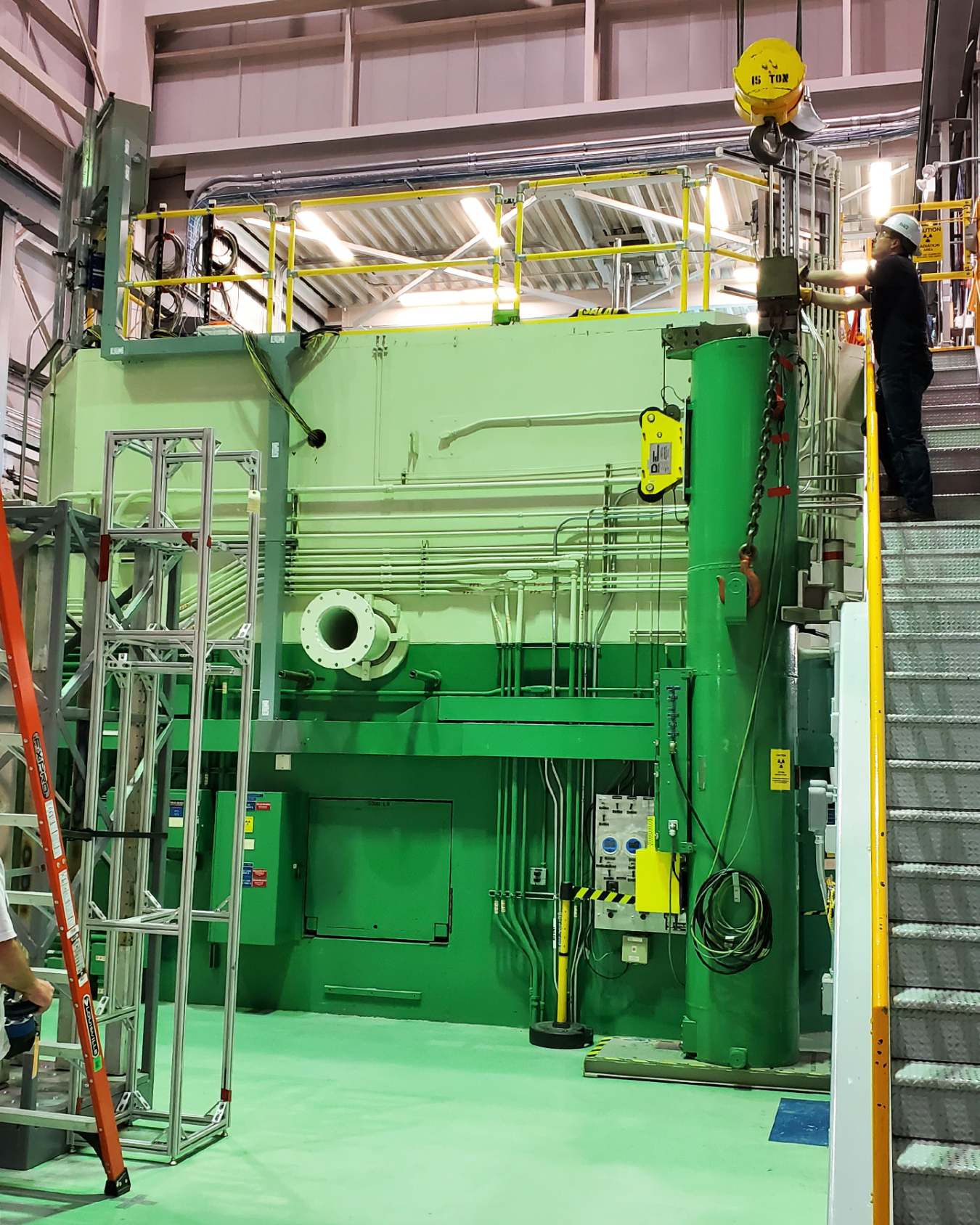Results from the first-of-a-kind experiment at Idaho National Laboratory could help boost performance and reduce waste generated at nuclear power plants across the country.
June 24, 2025Idaho National Laboratory (INL) researchers just wrapped up a nuclear fuel test that has never been performed before in the United States.
Results from the first-of-a-kind experiment will provide important data that could help boost the performance and lower the amount of waste generated at nuclear power plants across the country.
Testing the Limits of Nuclear Fuel
Lab researchers performed transient testing on a high burnup fuel sample that was previously irradiated in a commercial reactor.
The experimental fuel rod was one of 25 shipped to the lab last year as part of an agreement between the state of Idaho and the U.S. government to help develop and license new fuel technologies.
Researchers performed the experiment at the lab’s TREAT facility, which exposed the fuel to short bursts of energy known as “transient pulses” to safely push the fuel beyond its limits in a controlled setting.
The transient test was the first of its kind in the United States and will provide new data that could lead to more efficient use of the nation’s nuclear fuel.
“Idaho National Laboratory has spent years developing some of the best experimental testing capabilities in the world,” said Colby Jensen, the INL technical lead for transient testing. “TREAT and our Hot Fuel Examination Facility are uniquely equipped to conduct this research to better understand high burnup fuel limits in order to maximize their performance and energy production.”

High Burnup Fuels
Burnup measures the amount of energy that is extracted from nuclear fuel.
Higher burnup leads to better fuel utilization that allows companies to get more energy out of their fuel before it needs to be replaced.
High burnup fuels could lead to extended operation cycles and less waste generated over the life of the reactor.
The transient tests could also enable higher power outputs to deliver more affordable, reliable, and secure energy to U.S. consumers.
INL will conduct seven additional safety tests on the spent fuel shipment, with more in the early planning stages.
The tests will include some experimental rods supported through the U.S. Department of Energy’s Accident Tolerant Fuel program, which supports several major fuel suppliers in developing new fuel and cladding mixtures.
“This series of tests is a major step for our program,” said Frank Goldner, the federal manager for the Accident Tolerant Fuel program. “The end goal is to facilitate the commercial deployment of advanced fuels into our nation's light-water reactors to further enhance their safety and overall performance.”
Data collected from the experiments will support fuel qualification and licensing of the fuels, which could be commercialized before the end of the decade.
Learn more about our Accident Tolerant Fuel program.



